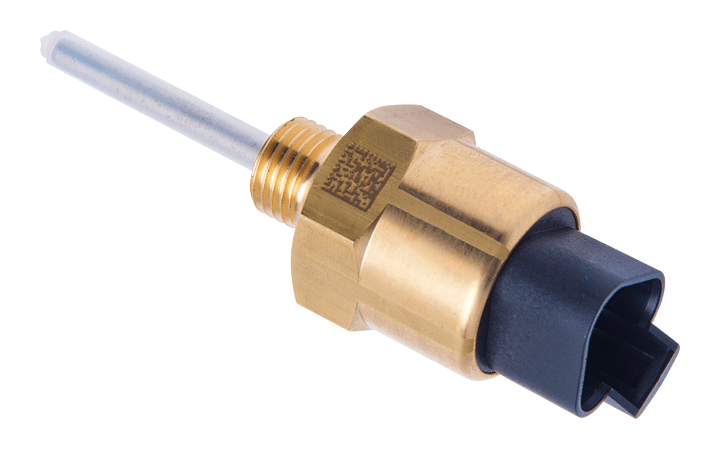CLS40/45 for Heavy Duty applications
BEDIA level monitoring sensors are used to monitor the filling levels of liquids. The sensors react when a filling level is exceeded or falls below a limit.
Aqueous mediums like coolants, AdBlue®, fresh water, waste water, bilge water and oil-based liquids like motor oils, hydraulic oils, fuels and brake fluids can be monitored.
Due to their rugged design, high IP protection classes and a working temperature range from -40 °C to +125 °C (-40 °F to +257 °F) the BEDIA monitoring sensors are primarily used in the following areas:
- Engines
- Agricultural machinery
- Construction equipment
- Hydraulic power-train control systems
- Utility vehicles
Level Monitoring Sensors CLS 40/45 for Heavy Duty Applications
Areas of Application and Advantages
BEDIA level monitoring sensors are used to monitor the filling levels of liquids. The sensors react when a filling level is exceeded or falls below a limit.
Aqueous mediums like coolants, AdBlue®, fresh water, waste water, bilge water and oil-based liquids like motor oils, hydraulic oils, fuels and brake fluids can be monitored.
Due to their rugged design, high IP protection classes and a working temperature range from -40 °C to +125 °C (-40 °F to +257 °F) the BEDIA monitoring sensors are primarily used in the following areas:
- Engines
- Agricultural machinery
- Construction equipment
- Hydraulic power-train control systems
- Utility vehicles
Wherever pressure switches or temperature sensors are today used as level monitoring elements, this sensor offers the advantage of indicating a critical condition far earlier:
Temperature sensors frequently react too late, because the medium to be monitored is no longer present. The rise in temperature is not passed on to the pick-up sensor. Pressure switches do not indicate low oil until there is a total shortage of oil and thus too late to protect the engine. The level sensor issues a warning when there is still enough medium present.
BEDIA level monitoring sensors differ from float-type switches in their compact design and their resistance to vibration:
Since they contain no mechanical moving parts, their function will not be influenced by dirt particles or other influences. No electrical current is sent through the medium via an electrode with BEDIA sensors, an electrolysis of the medium is not possible.
Operating Principle
The function of the sensor is based on the capacitive principle. It detects the change in capacitance that arises when an electrode surrounded by air is immersed into a liquid medium. This change in capacitance at the electrode of the sensor excites an oscillator, causing it to oscillate (at a frequency of approx. 600 kHz). Then this signal is processed by a microprocessor-based evaluation circuit.
Types of Media
The level monitoring sensors are designed for two different media types:
- For electrically conductive liquid mediums
with relative permittivity within a range of εr 35 … 85 (water, coolant, water/glycol mixture) - For electrically non-conductive liquid mediums
with relative permittivity within a range of εr 1.8 … 6 (engine oil, fuels, hydraulic oil)
Available Output Versions
The following output versions are available:
- positive switching
- negative switching
- analog output
- proportional analog output
Automatic Operational Check Time
The sensors have a two-second operational check built in as standard. When the supply voltage is applied (such as ignition being switched on), this signal appears for two seconds, thus signalling readiness to function. If this signal does not appear, the sensor should be checked. This self-monitoring makes it possible to check the level monitoring sensors from a central point for their readiness to function as well as for cable break. Especially in intricate, rambling systems, such as ships, checking conventional level switches is very difficult.
Other function control times are also available upon request.
Fault Indication Delay Time
To avoid indication errors when the swashing surface produces short fluctuations of the liquid level, the output signal is delayed with the standard fault indication delay time time of seven seconds.
Other indication delay times are available upon request.
Mounting Position
BEDIA level monitoring sensors may be installed in any position.
The level sensors must be installed in a damped zone so that the medium does not constantly moisten the level sensor by sloshing and splashing, which would cause error messages. This point is usually applicable for installation in gearboxes or for direct installation in engine oil pans during operation. In such cases, the measurement is only possible at engine shutdown.
It is mandatory to mount the sensor with a minimum distance of 7 mm to the wall.










